The masked dance ritual called Wanaragua takes place as part of the New Year’s celebration among the Garífuna villages on the Caribbean Coast of Central America.
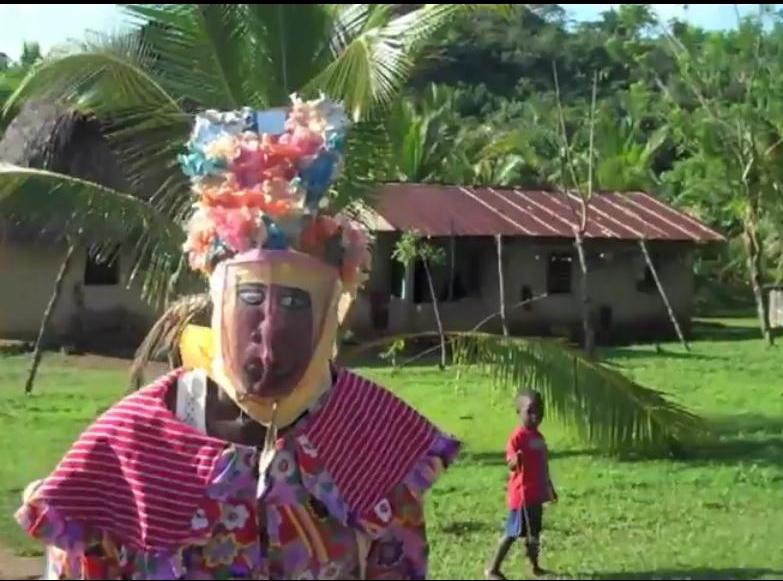

Wanaragua: Garífuna Disguised Warrior Dance
By Alejandro Tosatti
The warlike Wanaragua dance, also known as Máscaro in Spanish or John Canoe in English, is performed during Garífuna Christmas and New Years festivities and patron saint celebrations. With strong knee and open arm movements, the dancer grabs and shakes ribbons dangling from his headdress. The flashy dance, requiring skill and energy, is accompanied by two drums and shells tied to the dancer’s knees.
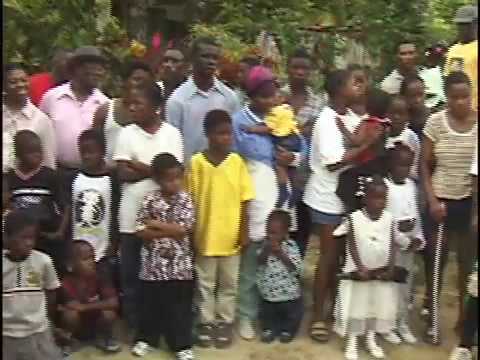
Watch this video on YouTube
Documentary “Play, Jankunú Play” – Masked Christmas processionals, commonly called Jankunú or Wanaragua, blends African, European, and Native American (Arawak and Carib) art traditions in which social and cultural identities are expressed through music, dance, and costume.
The History of the Wanaragua Dance
The origin of this masked dance dates back to the epoch in which the Garífuna inhabited Saint Vincent Island (XVII-XIX century). In those days, the British colonizers infiltrated the island, setting their sight on the huge expansions of land and the local work force, the Black Carib. These Garífuna ancestors resisted imperialist attacks and engaged in armed conflict with the British. This dance readopts the disguise that the Garífuna warrior utilized as a strategic defense against British forces. It is a celebration of their military victories.
According to Garífuna oral tradition, Barauda, the wife of the legendary Garífuna chief, Satuye, insulted her husband for not “being enough of a man” to avenge the British. The British were invading their communities and burning their cassava fields. She says, “Women, we are going to have to dress as men and fight against the British. Meanwhile, men, you had better dress as women. Because the only thing you do is flee each time the British come near our villages.”
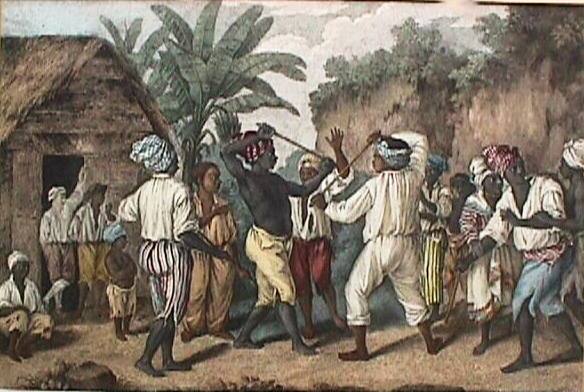
In response, Satuye developed a strategy whereby Garífuna men disguised themselves in women’s clothing. The British entered the Garífuna towns unprepared, not expecting male resistance. They assumed that only women were at home in the villages. Dressed as women, the male warriors assaulted the British and took the troops off guard. That is how the Garífuna cleverly deceived the British.
STORY: Inequality and Injustice – The Garifuna Struggle in Honduras
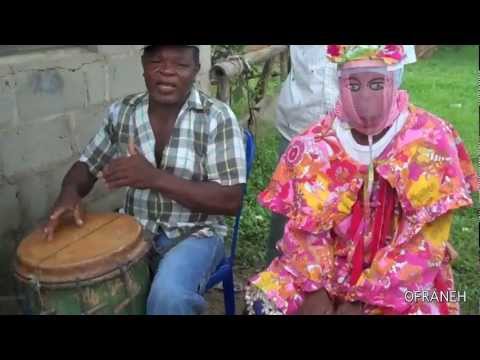
Watch this video on YouTube
Wanaragua Dance in Cusuna, Honduras – From OFRANEH: La resistencia cultural del pueblo garífuna persiste ante la pérdida acelerada de nuestro territorio ancestral y la paulatina nueva expulsión que padece nuestro pueblo, el cual arribo a honduras hace 215 provenientes de la Isla de San Vicente, donde los británicos practicaron un etnocidio en contra de nuestro pueblo. Hasta la fecha hemos conservado la cultura ancestral la cual surgió a mediados del siglo XVII en San Vicente, producto del sincretismo entre los pueblos arawak-caribe y náufragos africanos.
STORY: Honduras: Mega-Tourism and Garifuna Communities Collide
Wanaragua Dance Costumes
In the Wanaragua, the dancer is always male but wears an elaborate women’s costume. The dress reaches the knees or below. Some see it as a disguise that covers and hides the body. It is very showy with its ample colored ribbons, mirrors, golden papers, and decorated shells. The costume consists of three principal elements: the mask, the headdress, and the women’s dress. Two additions are of a particular importance. They include the colored ribbons in the back part of the dress and the small rattles attached to the calves.
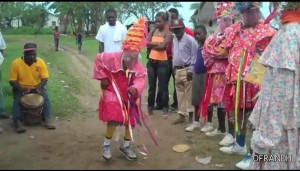

The dancer uses these colored ribbons to accent the arm gestures and the breaks in rhythm such as the turns. The rattles also stress the rhythm that is marked by the footsteps. The dancer uses these instruments in his relationship and dialogue with the drummer. The drummer follows the dancer and adjusts the beating to favor the dance.
Generally speaking, the mask is made of metallic silk and is painted with realistic human features. The edges are covered with cloth so that the dancer’s skin is not harmed. Recently, some mask-makers have created new, fantastical masks. They are by all means true, artistic creations.
The headdress is normally made out of cardboard. It is coated with aluminum paper, golden paper, spectacles, metallic paper strips, flashy colored ribbons. The imagination and creativity of the maker has free reign. Frequently, its size and danger of falling determines how the dancer positions his head. It is a simple women’s dress with small designs and bright, vivid colors such as yellow and red.
STORY: Garifuna Culture in Honduras: Dancing in a Changing World
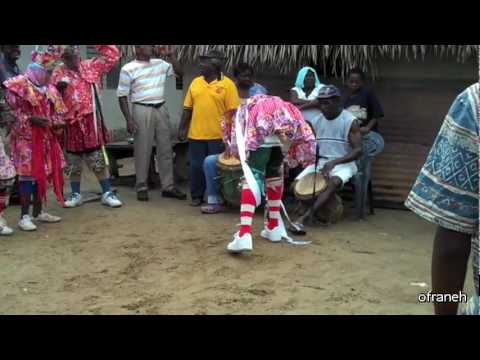
Watch this video on YouTube
Organización Fraternal Negra Hondureña – OFRANEH – Pueblo Garifuna de Honduras
Credit: Compiled by Alejandro Tosatti, InCorpore Cultural Association©. Based on interviews with Garífuna community members, Junior Clother, Santos Guzmán, Natividad Roches, Purificación Arriola López; Triunfo de la Cruz, Honduras, July 1998. All rights reserved. Edited and translated by Kristina Stevens, Latin American Studies, Stanford University.
Video Documentary By Oliver Greene: http://www.der.org/films/play-jankunu-play.html
Updated 26 March 2023









Pingback: Model Cities: Corporatocracy Seeks Submissive Wild For Love | WilderUtopia.com
Pingback: Honduras: Mega-Tourism and Garifuna Communities Collide | WilderUtopia.com
Love garifuna people. Remind me of my own people in many ways. I am from Antigua. We did some of the things the garifuna people do.the dance and the food. Discipline was most important of all things. My wife is a garifuna woman from Belize, we love to dance punta and I love to dance wanaragua. In Antigua we call it the Jon bull dance. We also celebrate during Christmas time also. We now live in Delaware so the Garifuna people are still strong. LOVE GARIFUNA. …
Pingback: Garifuna People Face Tourism Repression in Honduras | WilderUtopia.com
Pingback: Dancing Devils of Venezuela Challenge US Consumer Culture
Pingback: Caribbean Matters: Holiday celebrations take to the streets with parrandas, Junkanoo, and Gombeys - LenexworldLenexworld
Pingback: Caribbean Matters: Holiday celebrations take to the streets with parrandas, Junkanoo, and Gombeys - Republic Americas
Pingback: Holiday celebrations take to the streets with parrandas, Junkanoo, and Gombeys - YoursBulletin
Pingback: Caribbean Matters: Holiday celebrations take to the streets with parrandas, Junkanoo, and Gombeys - Paper Tribune
Pingback: Caribbean Matters: Holiday celebrations take to the streets with parrandas, Junkanoo, and Gombeys - US Clock News
Pingback: Holiday celebrations take to the streets with parrandas, Junkanoo, and Gombeys - Silvox Recordings
Pingback: Vacation celebrations take to the streets with parrandas, Junkanoo, and Gombeys – Money Making Methods
Pingback: The end of the year celebrations take to the streets with parrandas, Junkanoo and Gombeys - R4 News
Pingback: Holiday celebrations take to the streets with parrandas, Junkanoo, and Gombeys | News Dome
Pingback: Holiday celebrations take to the streets with parrandas, Junkanoo, and Gombeys - Get daily news updates
Pingback: Vacation celebrations take to the streets with parrandas, Junkanoo, and Gombeys - Ontariozillow
Pingback: Holiday celebrations take to the streets with parrandas, Junkanoo, and Gombeys - ANON MAGS
Pingback: Holiday celebrations take to the streets with parrandas, Junkanoo, and Gombeys - High Ponytail Hats
Pingback: Holiday Celebrations Take Place With Parranda, Junkanoo And Gombes On The Streets - Meczyki